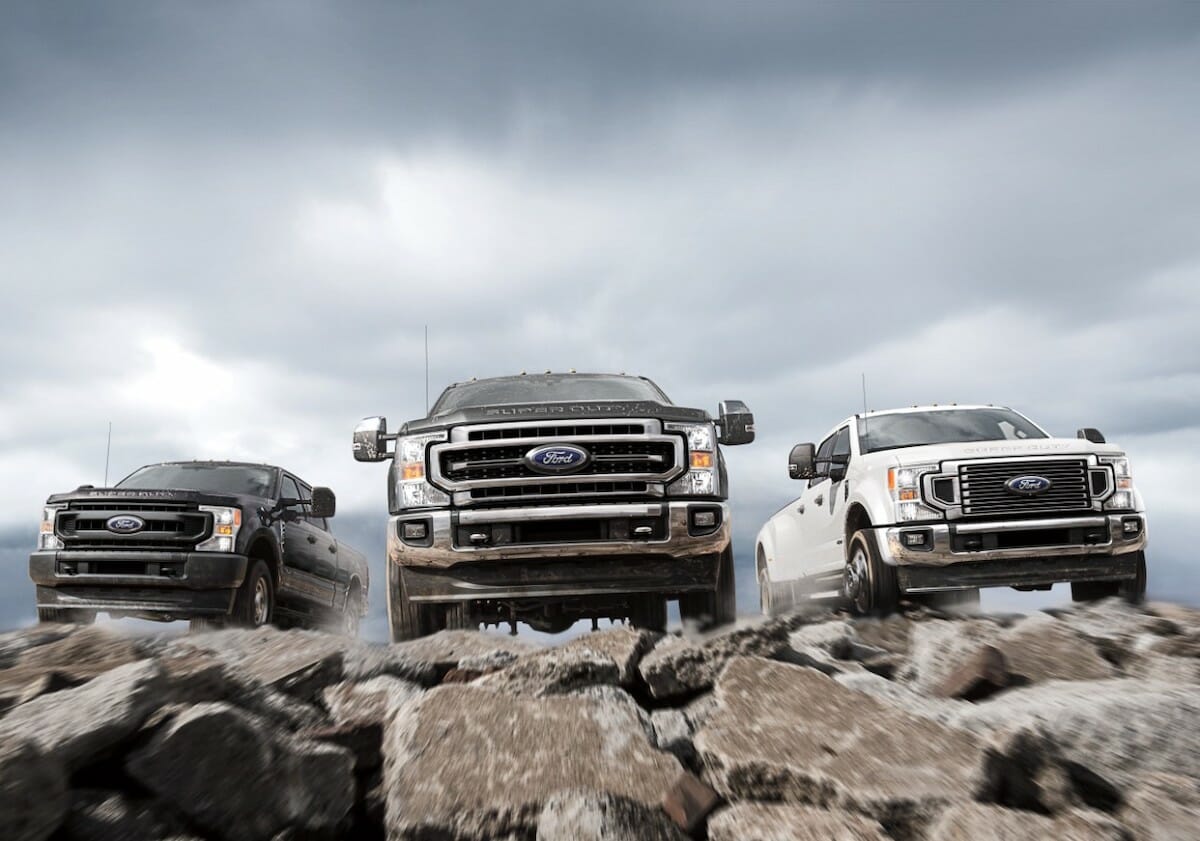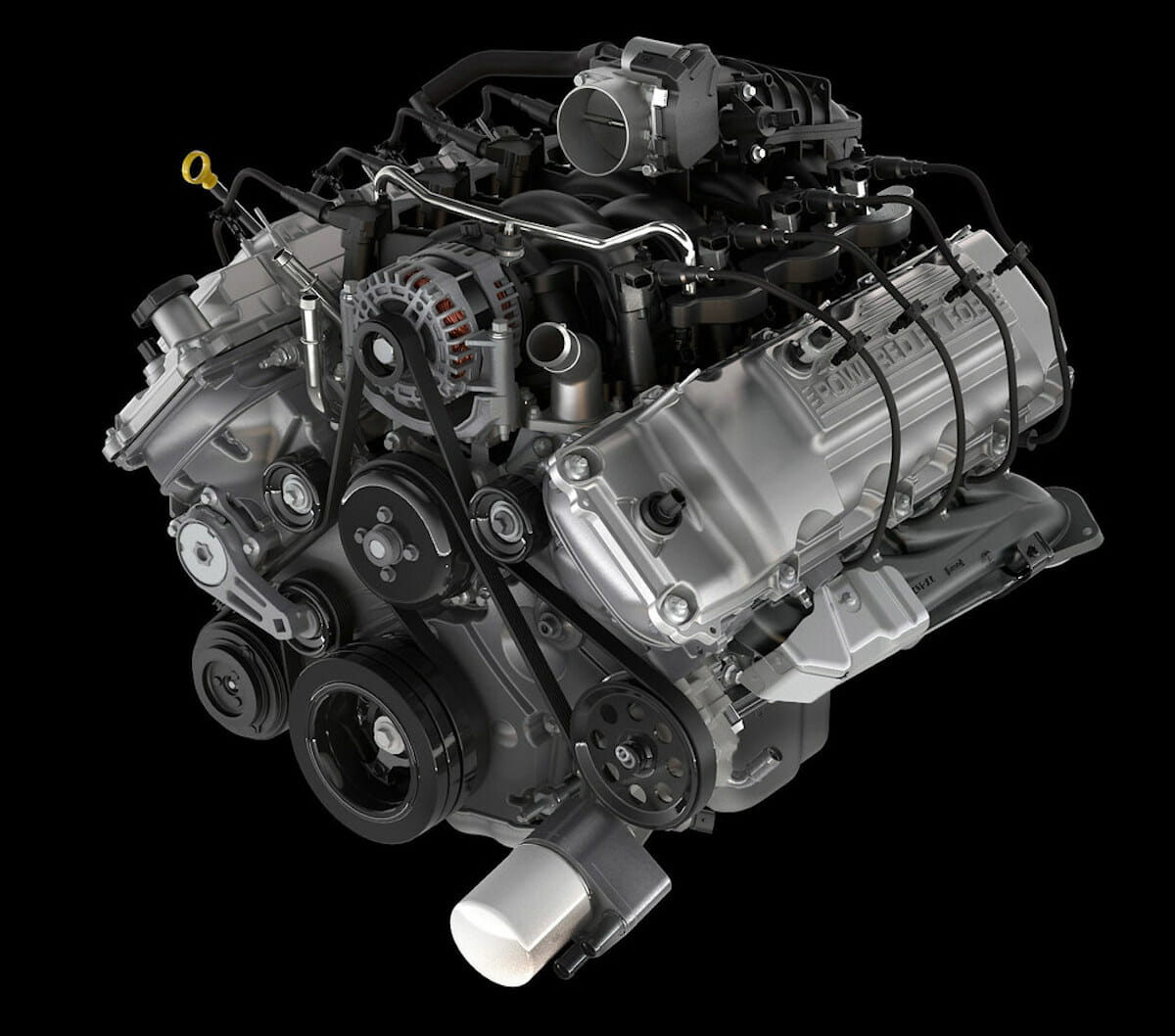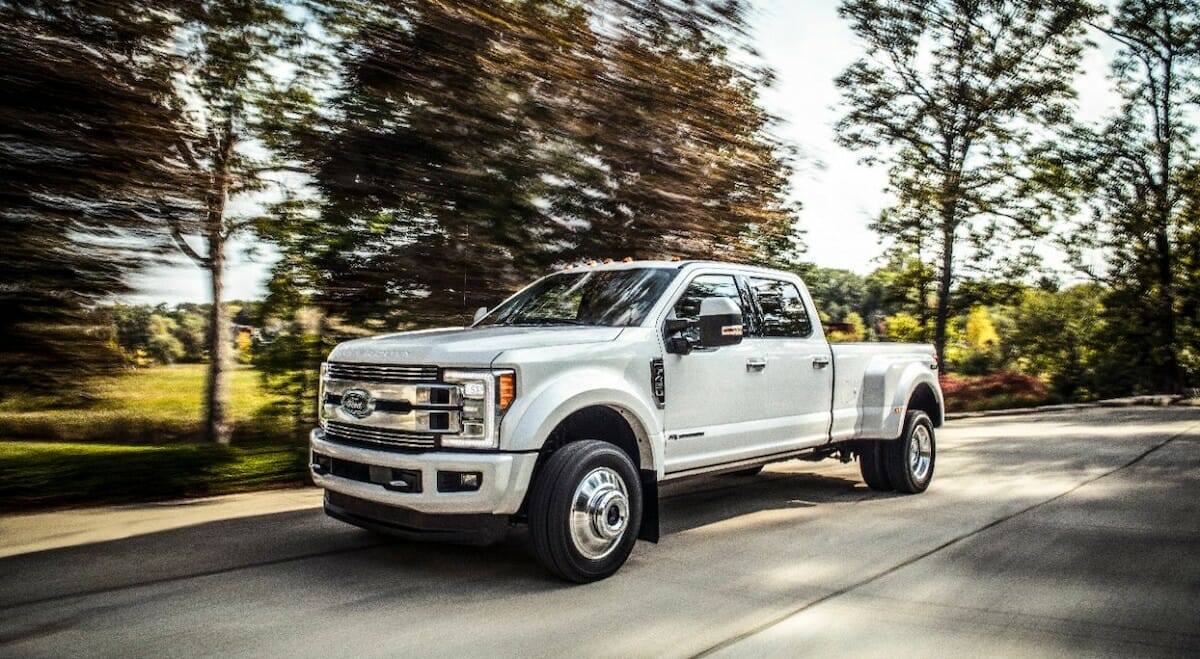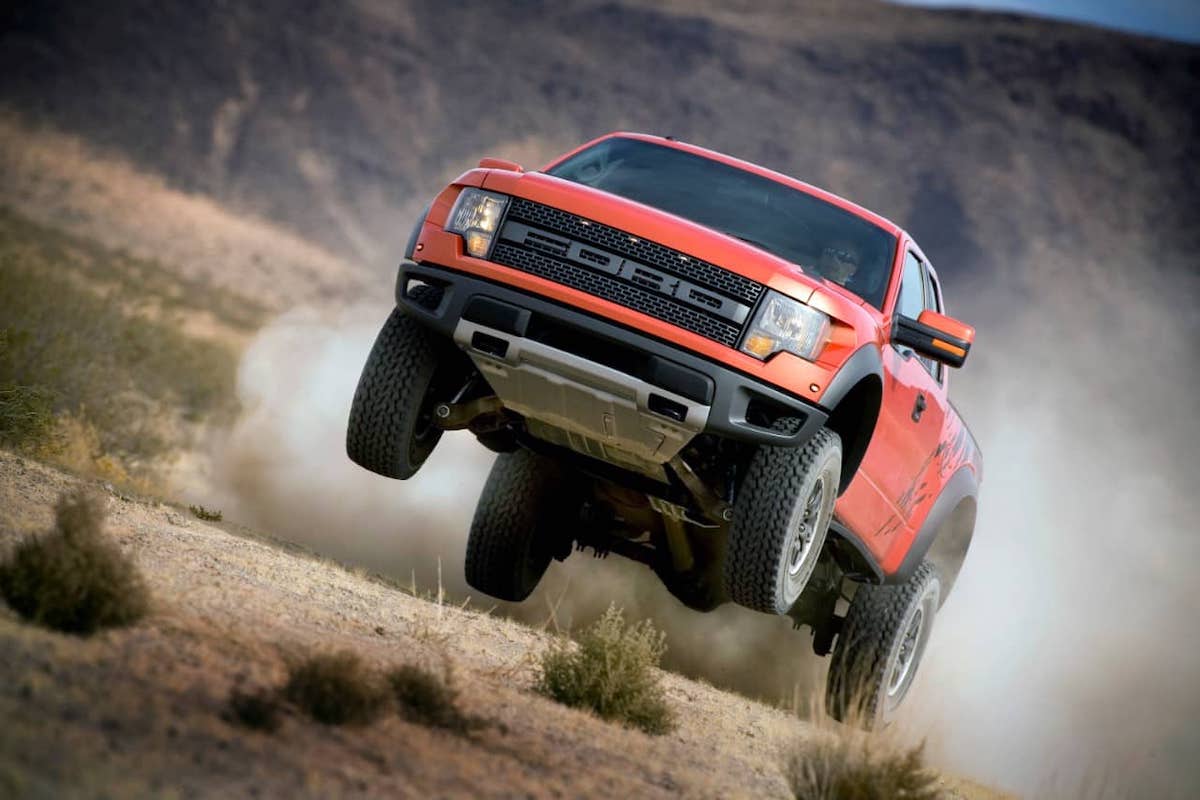Ford’s 6.2L V8 engine debuted in the 2010 Ford F-150 SVT Raptor trim and became a legend in its own right. We review the engine’s power and performance.

As the SUV and truck craze continues to forge on for over 20 years, automakers are steadily pushing the limits of engine performance and capability.
However, even as downsizing and electrification begin to take over, Ford has not stopped perfecting its eight-cylinder offerings.
In 2009, Ford launched its off-road-inspired Ford F-150 SVT Raptor, which featured a 5.4-liter Triton V8, the automaker’s first derivative of the Modular engine.
However, the Blue Oval was planning to wow customers with an even more potent V8 option that came in the form of a 6.2-liter (379 ci) V8.
In 2010, Ford began offering the 6.2-liter V8 as an option for the F-150 SVT Raptor. The Boss engine (as it is known internally at Ford) became the desired choice for Raptor customers.
Although Ford dropped the 6.2-liter option from the Raptor trucks, it has found its way into Ford’s F-series Super Duty pickups and E-Series vans as a replacement for both the 5.4-liter V8 and the 6.8-liter V10.
Since its 2010 debut, Ford’s 6.2L V8 engine has been available on such models as:
- 2011-2014 Ford F-Series
- 2011-2016 Ford F-Series Super Duty
- 2017 Ford F-Series Super Duty
- 2017 Ford E-Series
When you need a truck with some serious power, shopping for a used pickup with Ford’s 6.2L V8 engine is a good place to start. This motivated engine is designed to tackle even the most extreme road adventures. Still, some of the most powerful engines can have issues.
Let’s go over its history to understand the power behind Ford’s 6.2 engine.

Is the Ford 6.2 a Modular Engine?
The roots of the 6.2-liter V8 can be traced all the way back to 1991 when Ford replaced its former pushrod V8 engines with a new overhead camshaft V8 design, known as the Modular engine.
First introduced in the Lincoln Town Car, the two-valve single overhead camshaft 4.6-liter V8 was good for 190 horsepower and 260 lb.-ft. of torque. The new Modular V8 proved to be more powerful, quicker, lighter, and more efficient than Ford’s out-going V8. It was also more reliable thanks to its robust design.
The use of the Modular name by Ford is actually misleading. Rather than describing its interchangeability of parts among different versions of the engine, it describes the automaker’s ability to produce different types of engines on the same manufacturing line.
Since the 4.6-liter V8 was introduced, Ford has created two-, three-, and four-valve per cylinder variants; naturally aspirated and supercharged.
In addition, larger displacement engines have branched off from the original 4.6-liter design, including the 5.4-liter Triton V8 and 6.8-liter Triton V10 mentioned above, and Ford’s newest 5.0-liter Coyote V8, 5.2-liter Voodoo V8, and 5.8-liter Trinity V8.
With the ability to be longitudinally or transversely mounted, the Modular engine has found its way into many Ford/Mercury/Lincoln cars, trucks, and SUVs since the 1990s.
Ford 6.2 Engine’s Design
While the 6.2 engine was new to Ford, its overall design mirrors that of the rest of the Modular family. Featuring a deep-skirt block with cross-bolted bearings, crankshaft-driven oil pump, and overhead cam value arrangement are staples of a Modular engine.
The 6.2 V8 maintains the Modular family’s notorious durability thanks to its cast-iron block, aluminum cylinder heads, and forgoing of modern direct injection in favor of traditional port injection.
The 6.2-liter V8 sets itself apart from the rest of the Modular engine family with larger bore spacing.
According to Ford, via Jalopnik, larger bore spacing, use of dual-equal variable cam timing, and roller-rocker camshafts allow the intake and exhaust to breathe better for more power and better efficiency.
The 6.2-liter V8 also features dual knock sensors on each bank of the cylinders which allows the engine to continuously monitor engine performance and apply real-time learning to optimize timing.
How Much Horsepower Does a 6.2 Ford Motor Have?
When first introduced in the 2010 F-150 SVT Raptor, the 6.2-liter V8 was good for 411 horsepower and 434 lb.-ft. of torque. The 2010-2012 Ford F-150 Harley-Davidson Editions also used this version of the V8.
A limited-edition version of the Raptor straight from Ford Racing, the Raptor XT, featured a high-output version of this engine which bumped its power figures up to 500 horsepower.
While Ford may have done away with a V8 for its Raptor trucks (for now), the 6.2-liter V8 has still found its way into Ford’s current line of Super Duty trucks and E-Series vans to replace the aging 5.4-liter V8 and 6.8-liter V10. Horsepower and torque numbers are down slightly compared with the Raptor and Harley-Davidson F-150s, however.
The 2011 to 2016 Super Duty trucks are rated at 385 horsepower and 405 lb.-ft. of torque at 5,500 rpm.
For 2017, Super Duty trucks received new tuning and modified camshafts that bumped torque up to 430 lb.-ft., while still maintaining its 385 horsepower.
Although mated to a six-speed automatic, the 6.2-liter V8 is not known as the most fuel-efficient engine on the road. The 2010 F-150 SVT Raptor has an EPA-estimated fuel economy rating of 13 city/17 highway mpg.
In the F-series Super Duty trucks and E-series vans, the 6.2-liter V8 has been observed returning a combined 15 average mpg.

Ford 6.2 Engine: Maintenance & Common Problems
Owners of 6.2-liter equipped trucks and vans have reported two common problems found with this engine, including oil burning and water pump failure. As the engine passes the 100,000-mile mark, owners have reported issues with the 6.2 V8 burning oil.
Owners that diligently follow Ford’s recommended maintenance schedule by getting oil changes at intervals no more than every 5,000 miles can prevent this.
Another common problem reported among owners is the failure of the engine’s water pump, which could lead to overheating and ultimately engine damage.
Owners have reported water pump issues at both low miles or high miles on their vehicles, so it is important to pay attention to any changes in your vehicle’s performance or overheating alerts on the dashboard.
Also, following Ford’s recommended maintenance schedule could detect any issues with the water pump before it leads to bigger and more costly problems.
Given the 6.2 engine’s larger size, it uses two spark plugs per cylinder, therefore there will be 16 that need replacing. It is important that the replacement of each spark plug is done properly to avoid damage to the cylinder heads.

Is the Ford 6.2L Boss V8 a Good Engine?
Ford certainly did not reinvent the wheel when it created its bigger, Modular-based, 6.2-liter Boss V8.
While General Motor’s 6.2-liter V8 creates more power and torque than Ford’s 6.2-liter V8, Ford seems to be the winner in terms of durability and reliability.
Having been tested and proven by Ford’s Special Vehicle Team to handle being a high-performance off-road workhorse, it is safe to say the 6.2-liter V8 should keep your truck or van running for the long haul without requiring major maintenance.
As more and more automakers switch to smaller engines backed by forced induction, and/or electrification, it is important to be aware that added technology and additional parts will ultimately lead to additional maintenance.
In spite of this, Ford has leveraged 30 years of Modular engine expertise and brought the heat when creating the 6.2-liter V8. Although the automaker has begun phasing out its 6.2-liter V8, Ford is replacing it with an even larger 7.3-liter V8.
While this new motor returns to the classic pushrod engine design, it proves that even in this era of downsizing and electrification, there is still no replacement for displacement.
Photos: Ford
